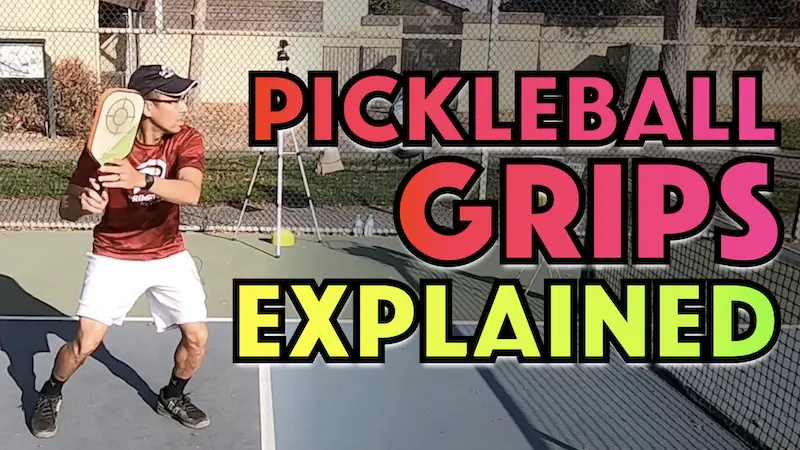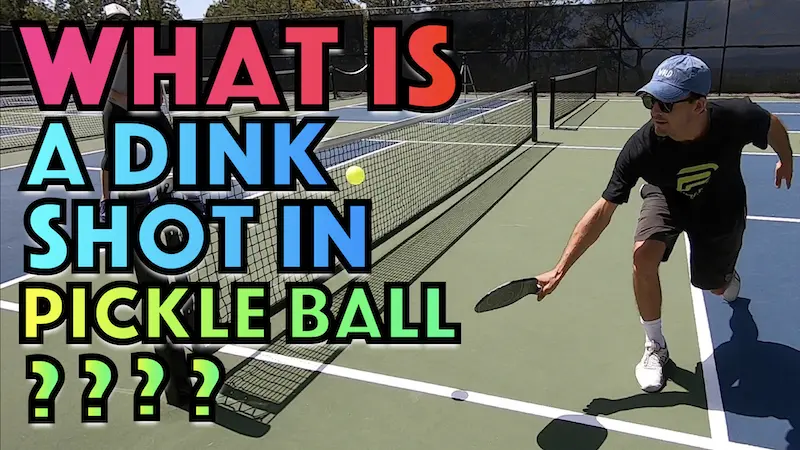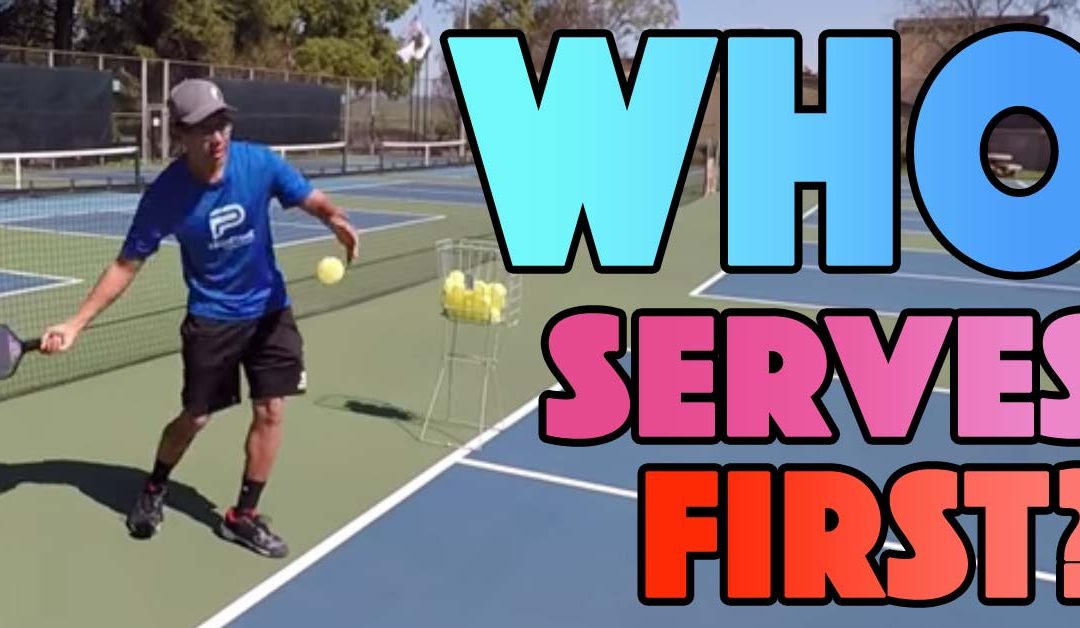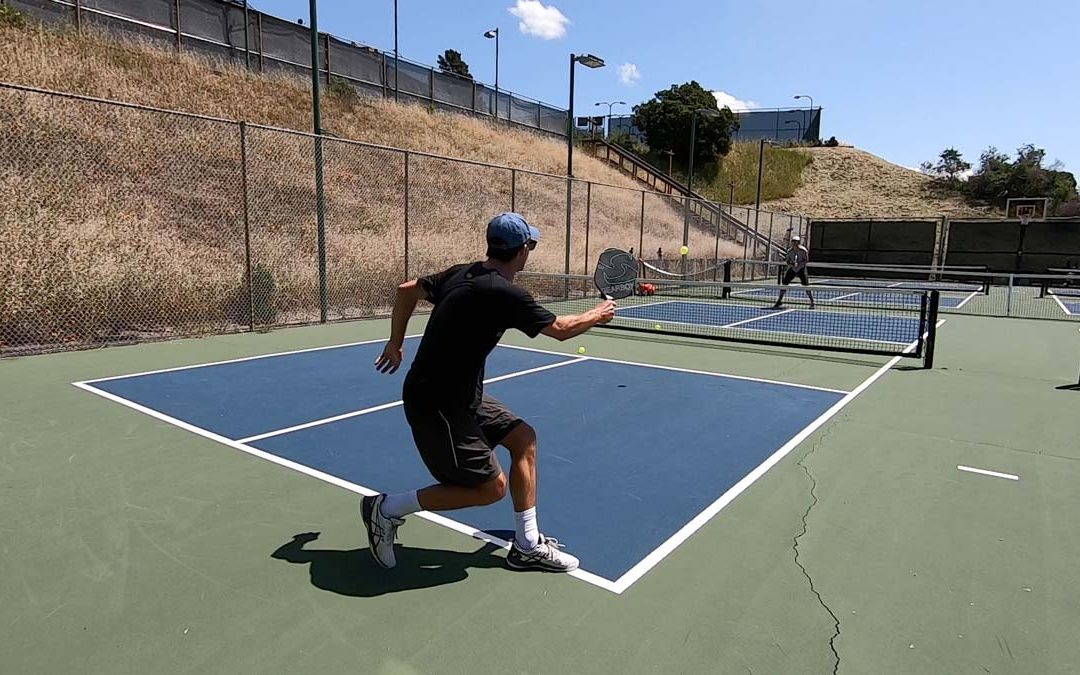There are many shots to learn in pickleball if you want to be a complete player and advance to the levels of play that you desire.
These shots include serves, returns, drives, resets, drops, dinks, overheads, attacking shots, etc.
Those shots are certainly all different. Some have more similarities than others but there are a core set of techniques that need to be present on every shot no matter what shot you’re hitting, whether that’s a hard shot or a soft shot.
It’s important that you know what they are and master them and use them as they apply and are adapted to each shot that you’re hitting.
Today we’re going to cover seven of the big core techniques that need to be present on each and every shot that you’re hitting.
Component #1 – Movement Before & After The Shot
Core hitting component number one is movement before and after the shot.
Predominantly here I’m talking about the split step. The initial move you need to make in order to be able to spring to the ball no matter where it goes. That is essentially, typically, a hop off the court and as you come down and your feet touch the ground you know which way the ball is going and you head off in that direction.
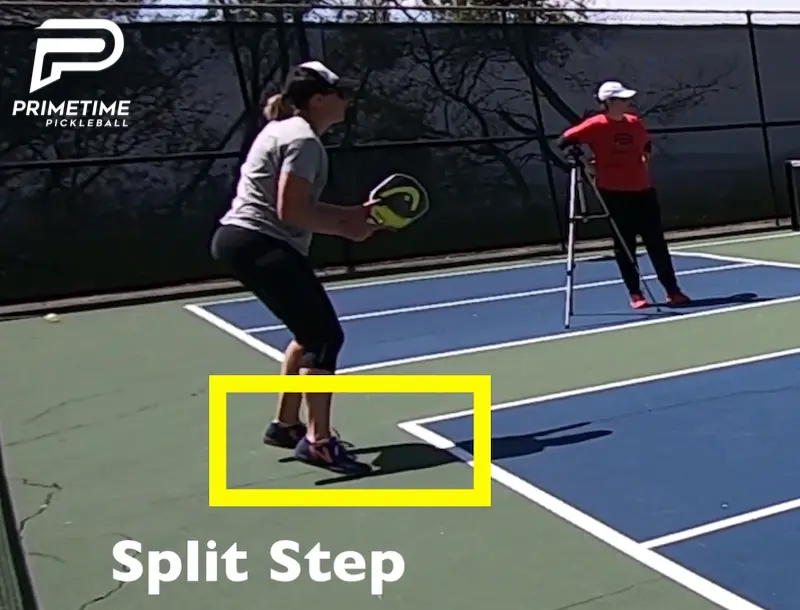
That split step will need to be more or less pronounced depending on the situation.
The more that there’s a chance that you’re going to have to run to the next shot or cover some significant ground the more pronounced of a split step you’re going to need to have.
If you’re further back in the court there is certainly the opportunity for your opponent to send you left, right, back or forward. You’re going to have to cover more distance when you’re at the baseline as opposed to at the non-volley zone line.
So, your split steps will generally be much more pronounced at the baseline and in the mid court if you happen to be somewhere in the transition zone.
They’ll be less pronounced at the non-volley zone line because you’re probably involved in a dink exchange or you’re attacking and counter-attacking. You’re generally not going to have to move very far. It’s more about hand speed at that point. There is going to be a bounce in your step however it’s not going to be a huge split typically.
If you do get caught having a run back for an overhead then that’s why you need the bounce so that you can move if you do need to. But, more often than not at the non-volley zone line your split steps are going to be less pronounced than when you’re deeper in the court.
After your shot you’re also going to need to recover to the next position you’re going to want to be in in order to best cover the next shot that’s incoming from your opponent.
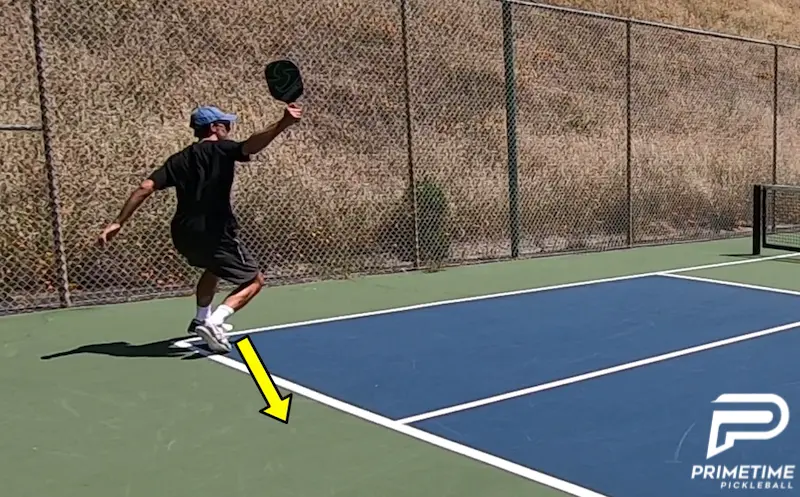
That’s important because you need to be able to get to the place where you can split step again and move to that next shot.
Your split step and movement to the ball and recovery from after hitting the shot is all interconnected and intertwined and is also very much involved in how well you’re going to be positioned to strike that ball well.
So that’s all extremely important – movement before and movement after the shot. That’s very important on each and every shot that you’re going to be hitting in pickleball.
Component #2 – Effective Coil & Uncoil
Core hitting component number two is an effective coil and uncoil on every shot.
This really all comes down to using your whole body on the shot and it all starts from the legs up.
You’re going to need to use more body or less body on some shots versus others.
For example, when you’re hitting ground strokes and you’re doing full swings you’re going to want to load up and coil up that body more on those shots.
You’re going to need less of it when you’re hitting softer shots such as drops or dinks or when you’re hitting traditional volleys when you’re mostly using the oncoming pace of the ball and just kind of redirecting and sending that pace back.
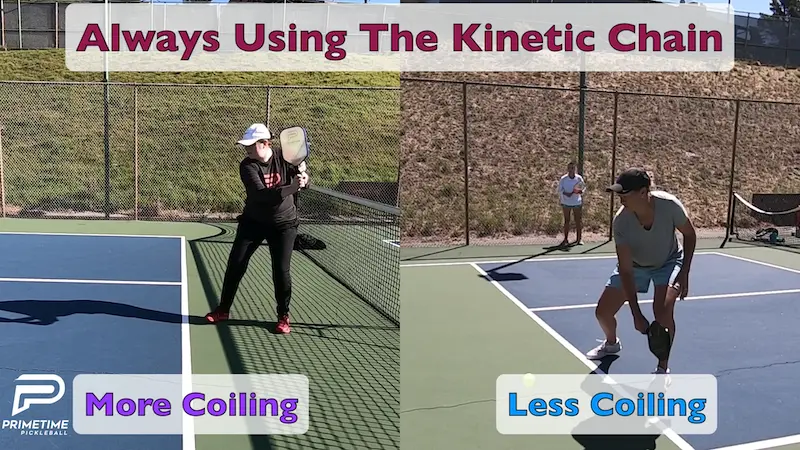
But in virtually all cases your knees and your hips are going to be more turned than your feet and your chest and shoulders are also going to be more turned than your hips.
You’re basically coiling up your body a little bit into a spring so that once you release and go into the shot you’re uncoiling it and you’re letting that unwinding of your spring strike the ball.
I see a lot of players that are just arming it way too much and that’s definitely not the most effective way to do it.
As much as possible you want to be loading up your entire body and using your kinetic chain to hit that ball. As I mentioned, in some cases, it’s going to be much more pronounced than others but it should always be present.
You’ll notice that all the best players are using their whole body when they hit that shot.
Component #3 – Good Use Of Off Arm
Core hitting component number three is good use of the off arm.
The off arm is the arm that’s not striking the ball. Let’s say that you’re a righty, your off arm is your left arm and vice versa if you’re a lefty.
The off arm will operate in different ways on the forehand versus the backhand side.
On the forehand side, you’re using it to turn and get set for the shot and build up your coil as we talked about in the previous point.

As you’re striking the ball you’re really just using it to stabilize yourself and you kind of gently move it out of the way as your hitting arm comes around.
You’re just kind of tucking it away as you hit that shot but it is engaged and is used to stabilize your upper body as you hit that shot.
On the backhand side, on a one-hander, it’s going to be used to counterbalance so as you turn you do use it to set the paddle and then as you come forward to the shot that off arm goes backwards and acts as a counter level to your dominant arm that is swinging forward and through the shot.
The counter lever will be a little bit more or less pronounced depending on how big your swing is. And of course if you have a two-handed backhand on some or all of your backhands then you’re going to have that off arm on the paddle along with the dominant arm and using it to bring that swing through.
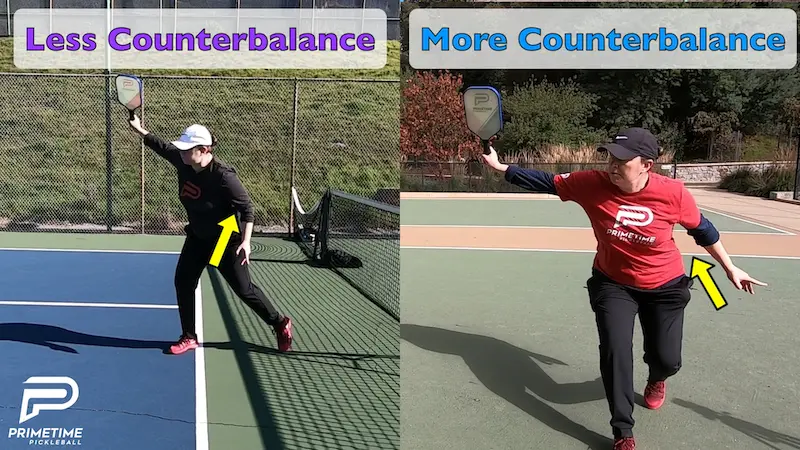
But in all cases that non-dominant arm has a subtle but very important job.
You don’t want to just have it hanging straight down and against your body. It does need to be up and engaged.
Component #4 – Appropriate Backswing
Core hitting component number four is to have an appropriate backswing. When I say appropriate backswing I generally mean an appropriately sized backswing.
There tends to be a different backswing problem on the forehand side versus the backhand side and I’m specifically talking about a one-handed backhand compared to a forehand right now.
Typically on the forehand side the back swings I’m finding tend to be too big and on the backhand side they tend to be too short.
This is all connected to the shoulder turn.
On the forehand side, to correct the big backswing problem, you really want to mostly be turning from the shoulders and not reaching back.

So, your shoulders will turn together and you’re going to get them facing sideways from the turn and then where that paddle is you don’t need to take it too much farther back beyond that, you just kind of drop into your motion.
So, don’t reach back on the forehand shoulder turn it back.
On the backhand side I’m tending to see that the back swings are too short because it’s a little bit more awkward to coil up and turn your body towards the backhand.
You really need to actually probably turn more than you realize so you can uncoil and use that kinetic chain effectively throughout your backhand shot that will give you more effortless and easy power.
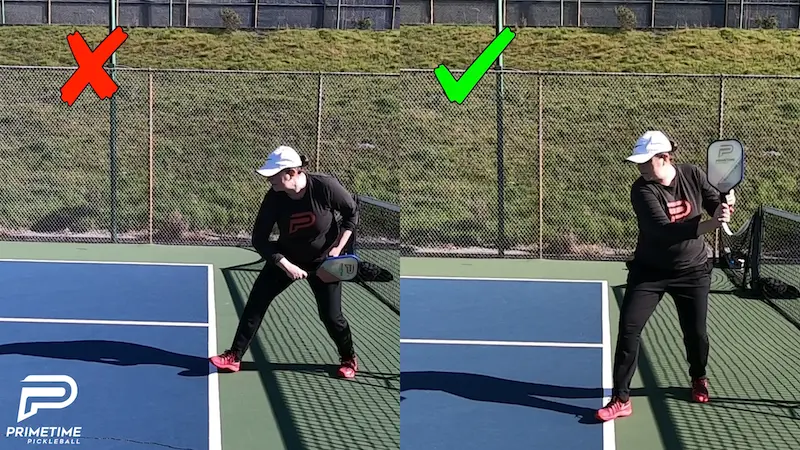
Generally, if you don’t turn enough, you’re not going to be able to get your whole body into it as you otherwise could.
So, turn more on the backhand and the backswing will kind of take care of itself and be sure not to be reaching back on your forehand, just turn to set it back.
Take a look at those and adjust as needed.
Also, on the softer shots, like dinks and drops and resets, you really need very little back swing at all. Just kind of set that paddle down and more push forward rather than taking it back and swinging into it. It’s a set down and push not a swing in those cases on the softer shots.
So, consider your take backs, which is synonymous with backswings, and adjust accordingly as needed based on what i’ve touched on here.
Component #5 – Eyes On Contact
Core hitting component number five is eyes on contact when you’re making contact.
It’s very important to keep your eyes and your head down as you’re hitting that shot so that you’re tracking the ball all the way into your paddle for the cleanest contact possible right in the sweet spot right where you want it.
The other benefit of keeping your eyes on contact is that it keeps your head down so that you’re not pulling up too soon and looking at that target too soon which in turn pulls up your whole upper body and then tends to send that shot going a little higher than you mean it to and it could sail out on you.
On all your shots – your drives, your drops, your volleys, your dinks – really try to keep your eye on that ball all the way into contact.
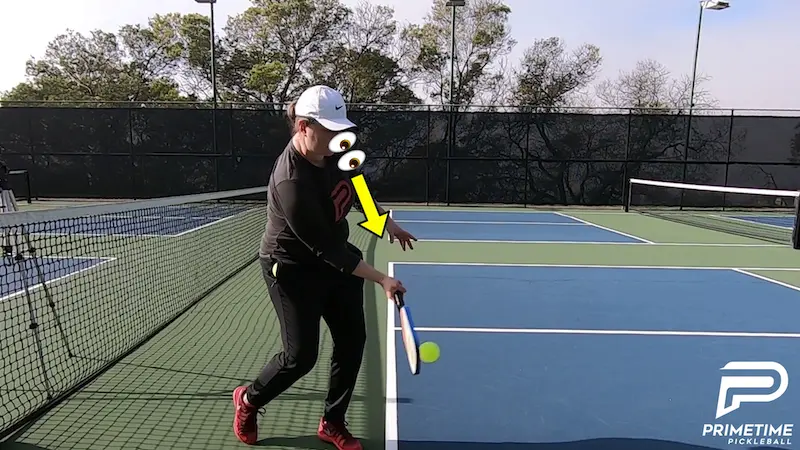
The one exception to this is when you’re in a heated volley exchange. It’s really hard to track that ball all the way into contact each and every time.
You’re gonna have to do your best and kind of keep your eyes a little bit softer and rely on your peripheral vision a little bit more to really get yourself through that hands battle because your eyes just don’t travel fast enough to track it back and forth the whole time.
As best as you can, track that ball all the way into contact on the majority of your shots and do your best in those quick hands battles and just track it as best you can.
Component #6 – Contact In Front & Good Spacing
Core hitting component number six is a contact in front and just generally good spacing for the type of shot that you’re hitting.
You do always want to have that contact in front on each and every shot but how far in front is going to vary depending on what shot you’re hitting.
For example, the one-handed backhand – when you’re hitting a drive then you’re going to be contacting it pretty well out in front as compared to if you’re hitting a one-handed backhand slice.
Your contact on that backhand slice is going to be a little bit further back than on the backhand drive it just makes more sense biomechanically.
It is actually optimal to have different contacts for different shots but the underlying rule is that it will always be out in front of your body because that’s going to be the most efficient way to transfer energy onto it.
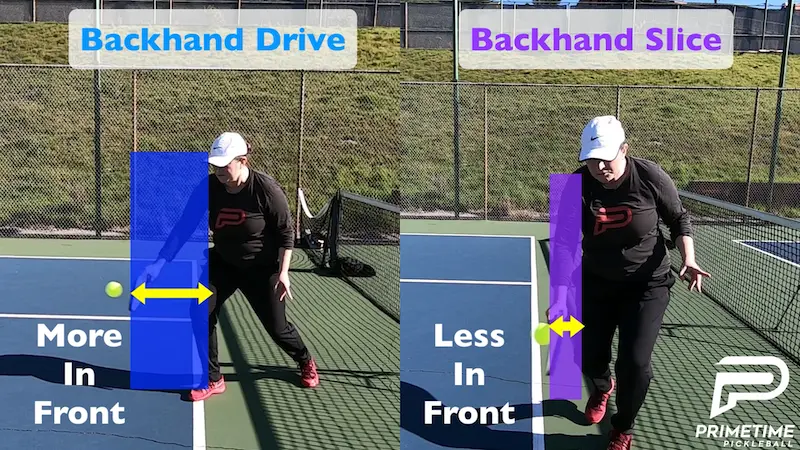
You can’t transfer energy onto something that’s behind you that you want to send forward. It just doesn’t work that way. Kinetically it’s not optimal.
Another good example is for instance resetting and blocking. You do want to have that contact a bit closer into your body and not reaching out in front to meet that as you would for other shots. You’re just going to have more control and be able to slow it down better. If your arm is already somewhat bent it’s much harder to slow down the ball if you’re going to be reaching out and have a straight arm as you’re meeting it.
So, for resets and blocks you’re going to want to have that contact definitely a bit closer to your body but again always out in front.
Component #7 – Appropriate Follow Through
Core hitting component number seven is having an appropriate follow-through.
You want to have a follow-through that is proportionate to the type of shot that you’re hitting.
For example, if you’re hitting a big drive with a long stroke and your arm needs to be whippy to generate power then you do need to pronounce follow through that on the forehand comes around and over your shoulder and on the backhand really extends up and out and high to the side.

For shots such as dinking, resetting, blocking, drops, that are all softer, and you’re not going to be hitting a very loose whippy shot for those, you’re going to want to generally have a shorter follow-through. On dinks much shorter.
When you’re having to hit drops from further back it’s going to be a little bit extended but not very long like a full ground stroke.
For blocks, you may have little to almost absolutely no follow through depending on how hard the shot was hit and how close you are to the net. You might just need to hold the paddle stable with the correct angle on your face and just let it bounce off your paddle and go back over the net with literally no follow-through. This does happen often and more and more as power is coming in bigger and bigger into pickleball.
So typically, the mistakes we’re seeing are not enough follow-through on shots where you’re wanting to generate a lot of power and you have a loose and whippy arm that you do need to relax and send through a bigger follow-through. We’re seeing abbreviated follow-throughs there where we don’t want that because you’re limiting your power potential.
And, we’re often seeing too long and unnecessary of a flick and follow through whether that be too much with the wrist or with the shoulder on the end of softer shots that’s just unnecessary and causes you to lose control.
So keep an eye out for not big enough follow throughs on ground strokes and bigger shots where you want to generate a lot of power. And keep an eye out for too much follow through on softer shots where you’re generally going to have shorter follow through.
Keep an eye out for unnecessary movement on the end of the stroke that creates a loss of control.
You’re going to want to look at those two things as needed on both your forehand and backhand side, on hard driving shots, as well as on softer shots to see what’s going on and make adjustments as necessary.
These are seven core components that need to be addressed and implemented appropriately for each different type of shot.
Assess your shots and consider if you’re applying these techniques correctly.
When you get these dialed in right for your various shots it will have a big impact on your control and power which in turn will have a huge impact on your game.
Happy Pickeling!


